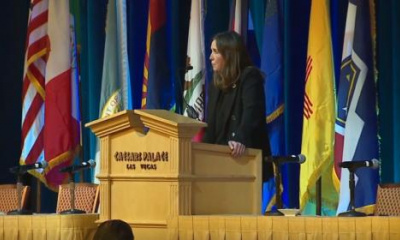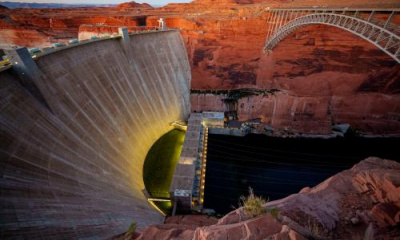Researchers still recommend a conservative approach to river management.
A new study found that the Colorado River may experience a rebound after two decades of decreased flows due to drought and global warming.
“Importantly, we find climate change will likely increase precipitation in the Colorado headwaters,” Professor Martin Hoerling, the study’s lead author, wrote to The Salt Lake Tribune in an email. “This will compensate some if not most of the depleting effects of further warming.”
Recently published in the Journal of Climate, the study by researchers at the University of Colorado Boulder’s Cooperative Institute for Research in Environmental Science used data from the Intergovernmental Panel on Climate Change.
Researchers analyzed precipitation, temperature and flows at Lees Ferry, a point 15 miles downstream of Glen Canyon Dam in northern Arizona. Lees Ferry serves as the dividing line between the Upper and Lower Colorado River Basin.
Winter snows melting off mountains in the Upper Basin states of Colorado, New Mexico, Utah and Wyoming and into the river each year produce about 85% of the river’s flow.
The study’s climate projections forecast that there is a 70% chance that climate change will lead to increased precipitation in the Upper Basin between 2026 and 2050. That precipitation increase could boost the river’s flows by 5% to 7%.
The Colorado River’s flows have decreased by 20% since the turn of the century.
But researchers caution that these forecasts aren’t a bailout for the beleaguered river. Climate change will lead to a higher variability in precipitation, meaning that “extremely high and low flows are more likely” on the Colorado River between 2026 and 2050, according to the study.
“When there is that much uncertainty involved in something, the smartest management approach is to be conservative,” said Brian Richter, who serves as the president of Sustainable Waters, an organization focused on water education.
Richter, who was not involved in the University of Coloraro study, recently authored a different study about where the Colorado River water goes from its headwaters to its dry delta in Mexico.
“That there might be better precipitation is good to know,” he said, “but it’s not cause to abandon the reality that we need to aggressively reduce our level of consumption.”
Water managers across the West are currently working to negotiate management of the Colorado River and its reservoirs after 2026, when current operational guidelines from 2007 expire. The Bureau of Reclamation, the federal agency that oversees water projects across the country, aims to complete a draft environmental impact statement for post-2026 operations by the end of this year.
Hoerling, too, pointed to the need for more responsible river use as water managers hash out future river guidelines: “The crisis, though triggered at this time by nature, exposed a structural problem of how water is used, especially in the Lower basin of the Colorado River.”
Arizona, California and Nevada — the Lower Colorado River Basin states, which draw their water from reservoirs — have committed to water cuts. The Upper Basin states argue that they shouldn’t have to cut their water use because they experience natural water cuts due to the river’s decreasing flows and evaporative losses.
Hoerling wrote that, given a warming planet and highly variable river conditions responsible management necessitates more research on how low the Colorado River’s flows could be in the future.









